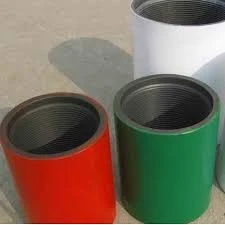- Afrikaans
- Albanian
- Amharic
- Arabic
- Armenian
- Azerbaijani
- Basque
- Belarusian
- Bengali
- Bosnian
- Bulgarian
- Catalan
- Cebuano
- Corsican
- Croatian
- Czech
- Danish
- Dutch
- English
- Esperanto
- Estonian
- Finnish
- French
- Frisian
- Galician
- Georgian
- German
- Greek
- Gujarati
- Haitian Creole
- hausa
- hawaiian
- Hebrew
- Hindi
- Miao
- Hungarian
- Icelandic
- igbo
- Indonesian
- irish
- Italian
- Japanese
- Javanese
- Kannada
- kazakh
- Khmer
- Rwandese
- Korean
- Kurdish
- Kyrgyz
- Lao
- Latin
- Latvian
- Lithuanian
- Luxembourgish
- Macedonian
- Malgashi
- Malay
- Malayalam
- Maltese
- Maori
- Marathi
- Mongolian
- Myanmar
- Nepali
- Norwegian
- Norwegian
- Occitan
- Pashto
- Persian
- Polish
- Portuguese
- Punjabi
- Romanian
- Russian
- Samoan
- Scottish Gaelic
- Serbian
- Sesotho
- Shona
- Sindhi
- Sinhala
- Slovak
- Slovenian
- Somali
- Spanish
- Sundanese
- Swahili
- Swedish
- Tagalog
- Tajik
- Tamil
- Tatar
- Telugu
- Thai
- Turkish
- Turkmen
- Ukrainian
- Urdu
- Uighur
- Uzbek
- Vietnamese
- Welsh
- Bantu
- Yiddish
- Yoruba
- Zulu
Understanding API Casing Sizes for Enhanced Oil and Gas Applications
Understanding API Casing Sizes A Key Component in Oil and Gas Drilling
In the oil and gas industry, the integrity and safety of drilling operations heavily rely on the proper selection and use of casing. Casing serves as a protective pipe placed within the borehole, shielding it from various geological pressures and preventing the migration of hydrocarbons. API (American Petroleum Institute) casing sizes standardize these components, ensuring uniformity and safety across the industry.
Understanding API Casing Sizes A Key Component in Oil and Gas Drilling
The selection of the appropriate casing size is crucial, as it directly impacts the operational efficiency of drilling activities. An incorrectly sized casing can lead to issues such as wellbore collapse, lost circulation, and ultimately, a complete blowout, which can have catastrophic consequences. Engineers and drilling teams must consider several factors when choosing the right casing size, including the geological formation, depth of the well, and anticipated pressure and temperature conditions.
api casing sizes

In addition to the size, the material composition of the casing is equally important. API provides specifications not only for the dimensions but also for the material grades, such as J55, K55, and P110, which indicate the tensile strength and yield point. Each of these grades is suitable for different operational needs and environmental conditions, further emphasizing the importance of proper selection.
Furthermore, the installation process of API casing is another critical aspect to consider. The casing must be cemented properly to the borehole wall to create a seal that prevents fluids from migrating between different strata. A well-cemented casing ensures the integrity and longevity of the well while minimizing environmental risks.
In conclusion, understanding API casing sizes is fundamental for professionals in the oil and gas industry. With standardized sizes and specifications, the API allows for consistency and reliability in casing selection and installation. By carefully considering the appropriate size and material, companies can enhance the safety and efficiency of their drilling operations, ultimately leading to more successful outcomes in the ever-evolving landscape of hydrocarbon exploration. Proper casing practices not only protect investments but also uphold the safety standards essential for the industry's future.
-
Tubing Pup Joints: Essential Components for Oil and Gas OperationsNewsJul.10,2025
-
Pup Joints: Essential Components for Reliable Drilling OperationsNewsJul.10,2025
-
Pipe Couplings: Connecting Your World EfficientlyNewsJul.10,2025
-
Mastering Oilfield Operations with Quality Tubing and CasingNewsJul.10,2025
-
High-Quality Casing Couplings for Every NeedNewsJul.10,2025
-
Boost Your Drilling Efficiency with Premium Crossover Tools & Seating NipplesNewsJul.10,2025







